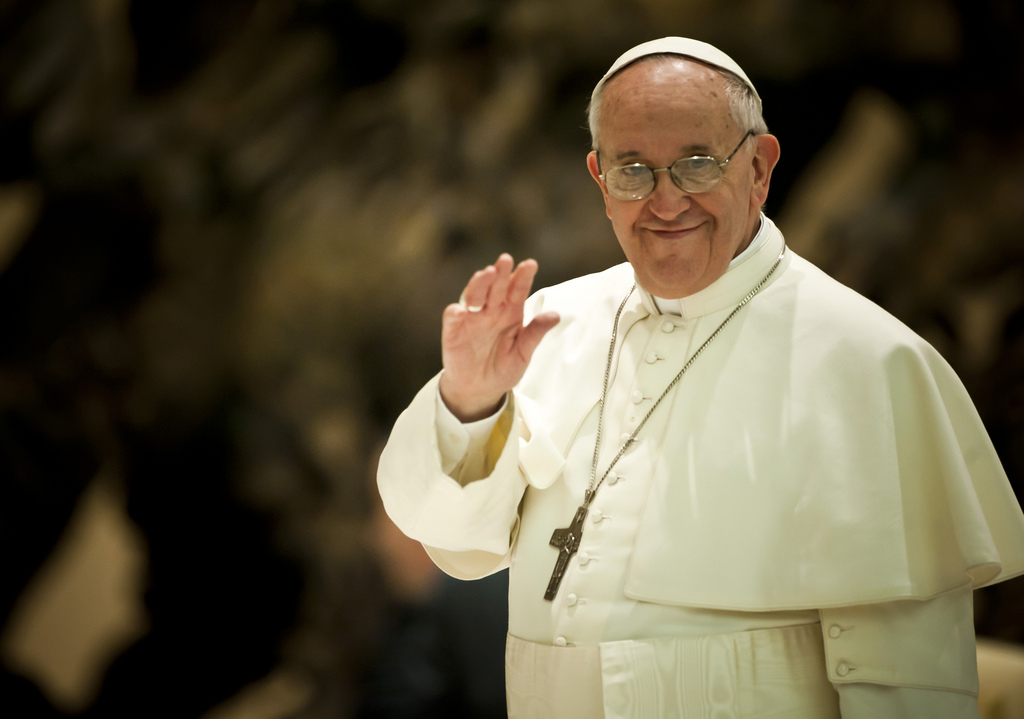
Pope Francis at a media event in March.
When Pope Benedict XVI announced his resignation on Feb. 11, he started a chain of events that have and will continue to change the world forever. His unexpected decision left the Catholic Church scrambling to identify a new leader for its 1.2 billion followers. After a two day papal conclave, Cardinal Jorge Mario Bergoglio became Benedict XVI’s successor on March 13 and took the name of Pope Francis.
Benedict’s resignation, while not unprecedented, is rare. No pope has performed such an act since 1415, when Pope Gregory XII resigned amidst the turmoil of the Great Western Schism when the Catholic Church split due to two rival popes. For Benedict, his declining health made taking on the tasks of the Bishop of Rome difficult. Described as “an incredible model of humility” by Notre Dame Magazine, Benedict’s decision may have inadvertently transformed the office of the Pope into one in which its holder is no longer, by default, expected to serve for life.
In Benedict’s own words from Light of the World, a compilation of interviews with journalist Peter Seewald, “[If] he is no longer physically, psychologically and spiritually capable of handling the duties of his office… he has a right and, under some circumstances, also an obligation to resign.”
Senior Ernie Camantigue says, “I was surprised that the pope actually quit, but, understanding that he is old and he had an injury, it would make sense… especially for someone like [him], because he’s looked at as a leader.”
Following his official abdication on Feb. 28, a papal conclave consisting of 117 cardinals from around the world convened at the Vatican to elect the new pope. Of those, 11 were from the United States. Cardinal Timothy Dolan, the archbishop of New York, was among the 11 and named in the Huffington Post’s “Papabile,” which described strong papal contenders.
On the second day of conclave, white smoke emanated out of the Sistine Chapel’s chimney, signaling that the church had a new leader. The new Bishop of Rome would be Bergoglio, who chose the name of Pope Francis in honor of Saint Francis of Assisi.
In some ways, Bergoglio’s ascension came as a surprise. Although he was the runner-up in the 2005 conclave, never in the history of the Catholic Church has the pope come from outside of Europe, and Bergoglio is Argentinian. Furthermore, of the cardinals in the conclave, only 19 came from Latin America. Nonetheless, he has been met with generally positive response.
St. Matthew Catholic Church pastor Anthony McGuire says, “[He] brings a whole new style, and all throughout his life [he’s] been much more involved with people in the grassroots. He seems to have a wonderful record of service to the poor.”
Born in Buenos Aires in 1936, Bergoglio, now 76, will be entering the papacy at a relatively old age. Throughout his life, Bergoglio has been an outspoken advocate for the poor, often criticizing the wealthy for turning a blind-eye towards their less fortunate neighbors. He previously served as the Archbishop of Buenos Aires and the Cardinal-Priest of St. Roberto Bellarmino.
Says teacher Martha Lopez, “It doesn’t really matter where he’s from. It matters what he’s going to do.”
The new pope will face challenges critical to the future of the Catholic Church, one of which will be promoting Catholic faith among youth. One of the first opportunities for him to reach out to this age group will be at the World Youth Day celebrations in July in Rio de Janeiro.
McGuire says, “Every three years, young people from around the world gather and there’s like a religious jamboree… This will be his first opportunity to appear there, and the fact that it’s in Latin America and he’s from Latin America—that connection will be very strong.”
The coming years will be an unprecedented time for the papacy as Francis must take on the challenge of leading the world’s largest church and addressing sexual abuse and Vatican corruption. However, one unique situation he will face will be leading a church whose former leader is still alive and still highly influential.
